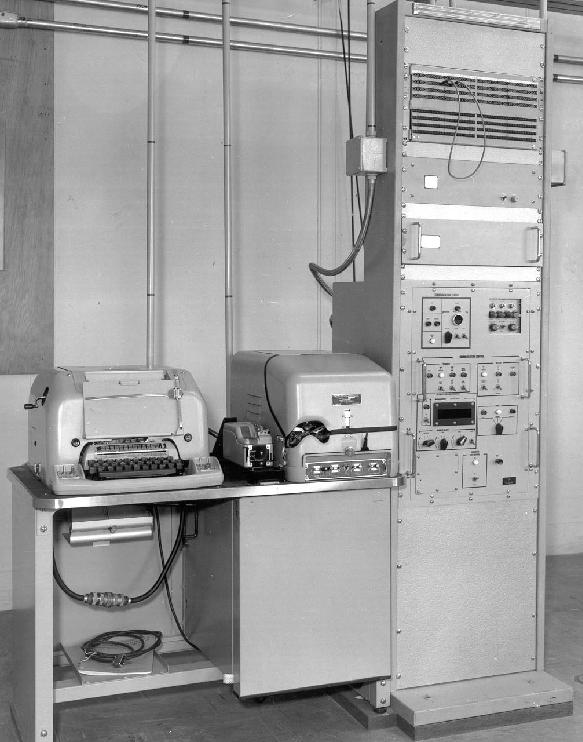The main Autodin station would send out polling data to
the various sites around the world.
When traffic was originated or received, the Autodin took care of
the routing procedures. It was designed to signal if there was incoming
FLASH precedent traffic (via the Sonalert on the front panel of the Mode
5 unit) which alerted the operator who generally had less than 5 minutes
to acknowledge receipt.
It numbered traffic messages so that the Autodin switch would know
if it missed any from the station. Operators would prepare
the messages and the Mode V unit would automatically create header and
routing data based on the data it read from the transmit punched tape.
In itself, it did no encryption of any sort.
An operator could sit at the keyboard, cut a tape and have hard copy
at the same time then use the reader to send the message. Alternately,
one could receive hard copy and a tape copy at the same time. You
could send or receive but not simultaneously because it was a half-duplex
unit . Usually, the message preparation was done on a separate machine.
Messages would be sent via keyboard when setting up circuits at HJ
time or whenever any end-to-end coordination was required but generally
all sending was through the reperforator with pre-punched tape.
Many Autodin installations used Kleinschmidt teletypes that were
upgraded from 45 wpm to 75 wpm. Although the modification seemed to work
well, the machine would shake and shudder while printing almost as
if it was trying to destroy itself. By 1970, the Kleinschmidts were
phased out and replaced by Teletpye Corp. machines.
Autodin Ancedote from Doug Eyre
While stationed at RAF Welford, England our Autodin broke once
in the entire time I was there. We were down about 48 hours before
a technical representative was dispatched. This guy had to be seen
to be believed - bowler hat, pin striped suit with vest, black shiny
shoes and an umbrella. The only thing he was worried about was the
directions to the local post office because he was a stamp collector.
This tech opened up the front of the equipment and for two days all
he did was turn schematic pages in the TO and point his little penlight
inside the machine. After two days, he received a phone call from European
HQ that said there was a problem with another circuit at a higher priority
site. So he
left with the TO open on the work bench and the equipment open in
the rack. Once of our maintainers, a SSgt by the name of Tad Phillips,
decided to try tracing the schematic. To the best of my recollection
this was still a discrete component type of machine with transistors but
no ICs.
Anyway, Tad traced the circuit and then pulled out a small sub-unit
and found a cracked resistor. We were told that this resistor was
a part classed as NRTS (not reparable this station) and that it
would have to be sent to the repair depot. Our circuit had
now been down for about five full days. I told Tad to call the local
TV repair shop in the small town of Newbury and see if they had a resistor
of that value, wattage, and physical size. They did, so he went down
town, bought it and installed it.
Voila! -The circuit came up.
Did we get a thank you and well done praise from HQ? Heck no!
We were "chewed out" because a non-milspec part was installed
into the unit to fix it! We offered to remove the part nut HQ thought
that probably wasn't a good idea. Then all went back to normal!
